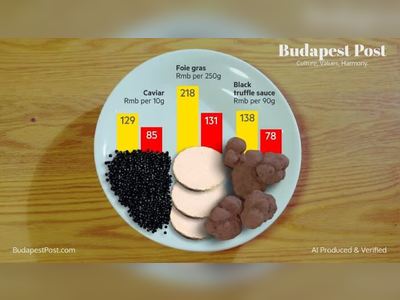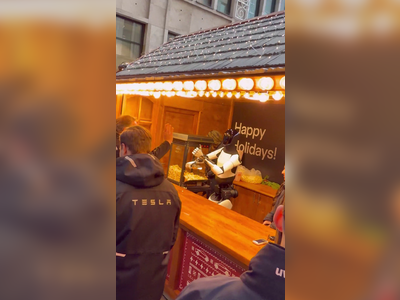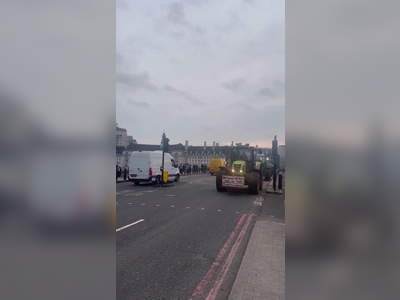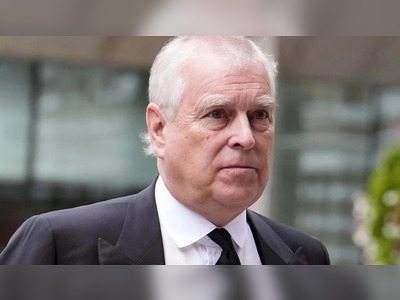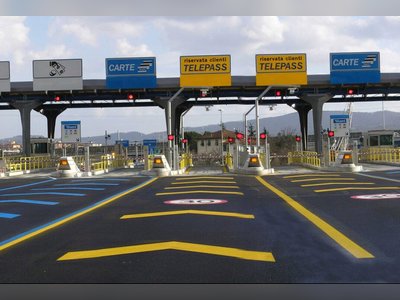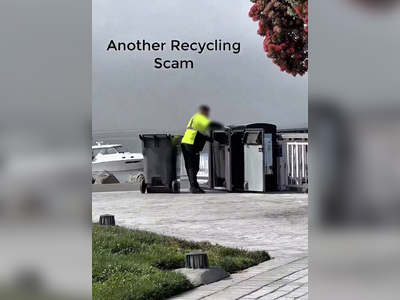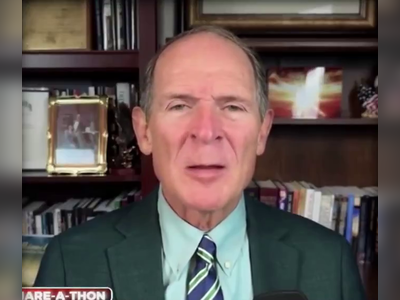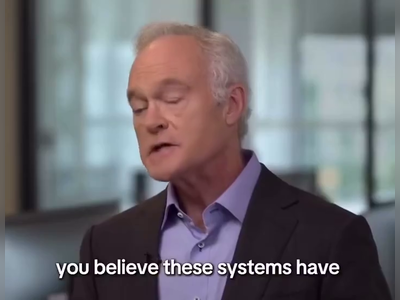
Tesla cut a steering component from some cars to deal with chip shortage, sources say
Under pressure to hit fourth-quarter sales goals while coping with widespread semiconductor shortages, Tesla decided to remove one of the two electronic control units that are normally included in the steering racks of some made-in-China Model 3 and Model Y cars, according to two employees and internal correspondence seen by CNBC.
Tesla did not disclose the exclusion, which has already affected tens of thousands of vehicles being shipped to customers in China, Australia, the U.K., Germany and other parts of Europe. It was not immediately clear whether Tesla would make similar changes to cars manufactured in or shipped to the U.S.
The omission indicates that Tesla had to make changes beyond what the company has publicly revealed to keep its factories and sales going from the final weeks of 2021 on, as the world faced an ongoing chip shortage that has affected everything from cars to laptop computers. It also means Tesla can’t turn all its existing cars into driverless vehicles with a mere software update, undercutting what CEO Elon Musk recently said on an earnings call:
“My personal guess is that we’ll achieve Full Self-Driving this year at a safety level significantly greater than a person. So the cars in the fleet essentially becoming self-driving via software update, I think, might end up being the biggest increase in asset value of any asset class in history. We shall see.”
Internally, Tesla employees said that adding “level 3” functionality, which would allow a driver to use their Tesla hands-free without steering in normal driving scenarios, would need the dual electronic control unit system and therefore require a retrofit at a service visit. They also said that the exclusion would not cause safety issues, since the removed part was deemed a secondary electronic control unit, used mainly as a backup.
At the time this manufacturing change was underway in Shanghai, CEO Elon Musk wrote in a tweet: “Oh man, this year has been such a supply chain nightmare & it’s not over!”
Tesla has struggled with manufacturing challenges throughout its history, but the completion of its Shanghai factory in 2019 helped it increase production, expand margins, and gain market share beyond North America. This latest decision reveals new pressures as the company pushes further into the mainstream, and aims to deliver on Elon Musk’s promises of a self-driving future.
Tesla did not respond to requests for comment on this story.
What the omitted part does
The specific item omitted is an electronic control unit in the electric power assisted steering systems, which translate steering wheel movements into wheel turns on the street.
Before cars used so many electronic components, vehicles would rely on a pump, steering rack, and pinion to translate steering wheel movements into turns.
Richard Wallace, principal advisor for HWA Analytics in Ann Arbor and veteran transportation safety researcher, explains how that’s changed.
“There’s still a mechanical component of course. But in today’s vehicles, when you ‘turn the wheel’ you are providing an electronic signal telling your car to go left or right.”
Electric power assisted steering systems today also enable driver assistance features, Wallace notes, like the ability to automatically keep a car in the center of a lane.
Tesla removed the component because engineers deemed it redundant, primarily installed as a backup. Omitting the control unit will also save Tesla money near-term, as long as no problems arise as a result of the altered system.
There’s some precedent for the company removing options or components for business reasons. For example, last spring, Tesla removed lumbar support from passenger seats in Model 3 and Model Y vehicles to lower costs.
On January 26, 2021, Musk said during an earnings call that Tesla had faced down a “chip hell of many chips” in 2021. The company had a hard time obtaining “the little chip that allows you to move your seat back and forth,” he noted, along with other “basic chips.”
He did not mention the altered power steering systems.
Other automakers have taken similar steps, but typically make temporary cuts to options that aren’t part of a vehicle’s core functionality.
For example, in March 2021, General Motors said it was building some of its 2021 light-duty pickup trucks without a fuel management module, a move that hurt those trucks’ fuel economy. It blamed the chip shortage for the move.
Tesla’s self-driving future
Tesla currently offers several levels of driver assistance functionality in its cars. A basic version, dubbed Autopilot, comes with every car. Drivers can also buy a more advanced version, called Full Self-Driving, or FSD, for $12,000 or $199 a month (in the U.S.).
When Tesla made the decision to exclude an electronic control unit from its steering racks, there was an internal discussion about whether to notify customers, two employees told CNBC. These people asked to remain anonymous because they were not authorized to speak on behalf of the company.
Employees also discussed whether omitting the part would degrade any functionality in or reliability of customers’ cars. They worried whether the “depop,” or exclusion, of this component may interfere with customers’ ability to use FSD features.
Ultimately, they decided the tweak did not rise to the level of customer notification -- at least until Tesla is ready to launch “level 3,” or hands-free driver assistance features.
Tesla vehicles can still use the current “level 2” versions of its driver assistance systems, Autopilot and Full Self-Driving (or FSD), without the dual-control steering system.
But employees told CNBC if Tesla launches a more sophisticated FSD update, owners with the affected cars who use that premium system will need to get a steering rack retrofit from a Tesla service center.
Generally, Tesla relies on service technicians to install missing parts or to repair or replace broken parts, before a car is delivered to a customer, making service a kind of extended arm of Tesla manufacturing.
Most of the cars with the single electronic control unit were going to customers in China initially, where FSD is not seeing significant uptake. According to internal communications seen by CNBC, just over 1% of all Tesla customers in China opted for the premium driver assistance package at the time they placed an order for a new car.
More recently, tens of thousands of the affected vehicles were exported to customers beyond China, including in Australia, the UK, Germany and throughout Europe, employees told CNBC.
The safety question
CNBC asked HWA Analytics’ Richard Wallace whether removing an electronic control unit from a power steering system in a modern vehicle could pose a safety risk.
“If something like a chip or an ECU is not providing additional functionality, if it is truly redundant, you may be able to turn it off or leave it out. With chips and software, there’s a little bit of wiggle room. I can reassign stuff here and there,” he said.
Much depends on a vehicle’s computing architecture, said IHS Markit Senior Principal Analyst Phil Amsrud.
He said, “I cannot think of a case where an automaker would say ‘You know what? We’ll take a component out of that module, even though it was there for a good reason and we’ll hope nothing happens.’ Going from a dual chip to a single chip variant in a vehicle can make a system simpler and make it better in some cases. But they’d really need to do a lot of validation.”
Most automakers would spend 1,000 hours on testing or more to make any big changes, he estimated. That can take upwards of four months. It can also take years for quality or safety issues to become clear after changes are made.
Tesla employees told CNBC that the company spent less than a few weeks discussing the change before moving ahead and didn’t view it as a big deal -- more of a chip-famine survival tactic.
The company had previously produced earlier models that featured a power steering system with only one electronic control unit, and that gave them greater confidence. So too did Tesla’s frequently touted ability to push software updates “over-the-air” to vehicles to refine their functionality if needed.
